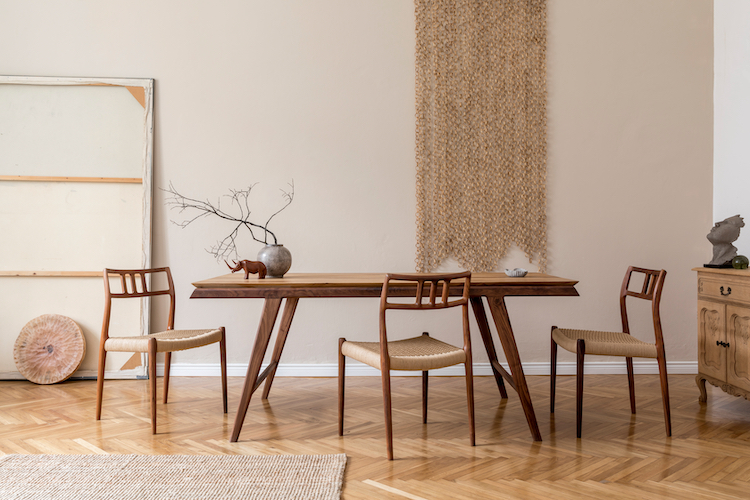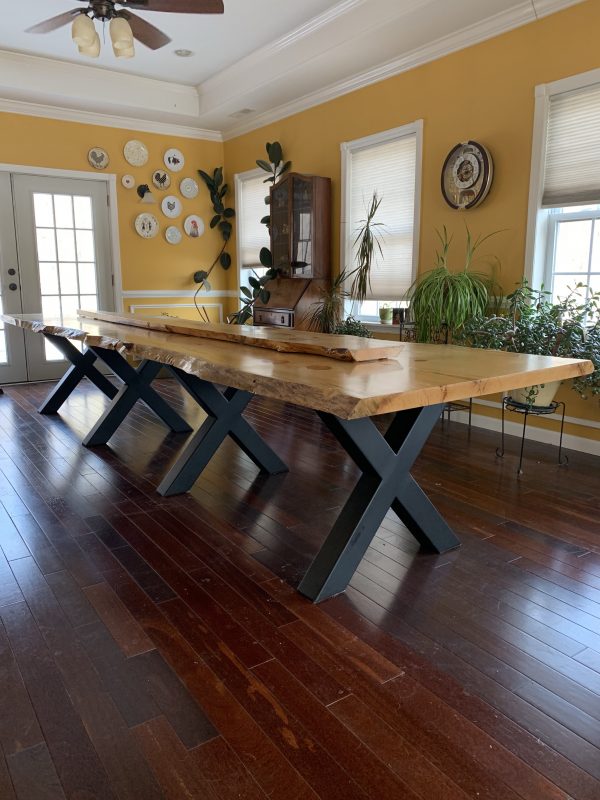From Standard to Modern: Discover the Perfect Eating Room Table Legs for Your Design
The selection of dining-room table legs plays a critical function in defining the total personality of your space, linking the void in between conventional craftsmanship and modern-day looks. While timeless designs such as cabriole and transformed legs evoke a feeling of classic sophistication, modern styles like hairpin and geometric options present an opportunity for striking aesthetic interest. Examining the right balance between these styles calls for a nuanced understanding of your existing design and personal taste. As you consider these components, the question stays: exactly how can you flawlessly integrate these varied leg styles to produce an unified dining experience?
Understanding Table Leg Styles
The variety of dining space table leg styles can significantly influence both the looks and capability of the room. Each leg design adds unique aesthetic aspects and functional attributes, catering to diverse style choices and usage demands. Comprehending these styles is important for picking the ideal table that lines up with your overall interior style vision.
As an example, tapered legs supply a tidy, timeless appearance that can improve a room's elegance, while stand bases give security and make the most of legroom, making them optimal for smaller rooms. Barrette legs, a hallmark of mid-century modern-day style, introduce a commercial style, enabling a ventilated, open feel. Similarly, trestle legs stimulate rustic charm, supplying robust assistance and a sense of eternity.
Furthermore, the choice of materials plays a considerable duty. Wooden legs can bring heat and structure, whereas metal alternatives often share a smooth, modern vibe. Ultimately, understanding table leg designs is important for developing a cohesive eating area that reflects personal design while guaranteeing usefulness and convenience. By attentively considering these aspects, you can enhance both the visual and functional charm of your eating space.
Standard Table Leg Options
When selecting dining space table legs, traditional options usually symbolize ageless style and craftsmanship. These designs show an abundant heritage and a commitment to high quality, making them suitable for those that value classic appearances.
Among the most iconic conventional leg designs is the cabriole leg, identified by its elegant curved shape. This design typically includes attractive makings and is most commonly located in Queen Anne and Chippendale furniture. One more prominent choice is the turned leg, which boasts a series of smooth, rounded shapes that offer a traditional look while maintaining stability.
Additionally, the straight leg, while basic, uses a unadorned and sturdy framework that can blend effortlessly with a range of tabletop styles. For those drawn to ornate detailing, claw-and-ball feet legs stimulate a feeling of majesty and can offer as a stunning centerpiece in any eating area.
Finally, stand bases, although not strictly legs, offer an alternative typical alternative that permits adequate legroom and can be magnificently carved. Each of these traditional leg designs adds to the total atmosphere of a dining-room, marrying feature with visual allure.

Modern Table Leg Layouts
Modern table leg styles supply a diverse series of designs that stress clean lines and innovative materials. These styles often focus on capability while working as striking focal points within a dining space. Minimalist visual appeals are widespread, with legs crafted from materials such as steel, glass, and engineered timber, which contribute to a contemporary and ventilated feeling.
One prominent layout is the hairpin leg, defined by its slim, tapered structure that gives stability without frustrating the table top (dining room table legs). This style is typically located in mid-century Home Page modern furniture and can easily match various table shapes. An additional trend is the usage of geometric forms, where legs may handle angular or unbalanced forms, adding visual passion and a touch of virtuosity

Blending Designs for One-of-a-kind Rooms
Typically, home owners look for to produce unique dining rooms that reflect their personal design by mixing different design elements. This method enables the incorporation of varied appearances, causing a harmonious yet unique setting. Coupling a rustic wood table with sleek, modern-day metal legs can develop an attractive contrast that boosts the space's total charm.
Additionally, integrating vintage table legs with modern tabletops can stimulate a sense of history while keeping a modern perceptiveness. Such combinations not just showcase private preference but additionally motivate creativity, enabling homeowners to curate a room that feels both personal and welcoming.
Shade plays a crucial function in this mixing process; selecting table legs that enhance or contrast with the existing color pattern can enhance aesthetic rate of interest. Whitewashed legs can soften the daring of a dark table surface, producing a well balanced aesthetic.
Tips for Selecting the Right Legs
Picking the right table legs is essential for achieving both performance and visual allure in your dining area. Begin by taking into consideration the general design of your area. Traditional settings profit from legs that include detailed makings or transformed designs, while contemporary spaces may require smooth, minimal designs.
Next, evaluate the height and security of the legs. dining room table legs. Conventional eating tables range between 28 to 30 inches in height, so guarantee the legs match this dimension for comfort. Furthermore, durable products, such as wood or steel, can improve security and long life
Review the leg form too-- options consist of directly, tapered, or stand layouts. Straight legs supply a timeless appearance, while conical legs can include a touch of style. Pedestal bases supply pop over to this site ample legroom and are excellent for smaller rooms.
Conclusion
In recap, picking the excellent eating room table legs calls for mindful consideration of both conventional and modern-day designs. By balancing leg design, elevation, and material with the total decor, a cohesive and welcoming environment can be achieved.
The selection of dining area table leg styles can substantially influence both the appearances and functionality of the area. Ultimately, recognizing table leg designs is necessary for producing a natural dining area that mirrors personal style while making sure practicality and comfort.One of the most legendary conventional leg designs is the cabriole leg, identified by its stylish bent shape. Straight legs provide a timeless look, while conical legs can include a touch of beauty.In recap, selecting the ideal dining room table legs calls for careful consideration of both typical and modern styles.